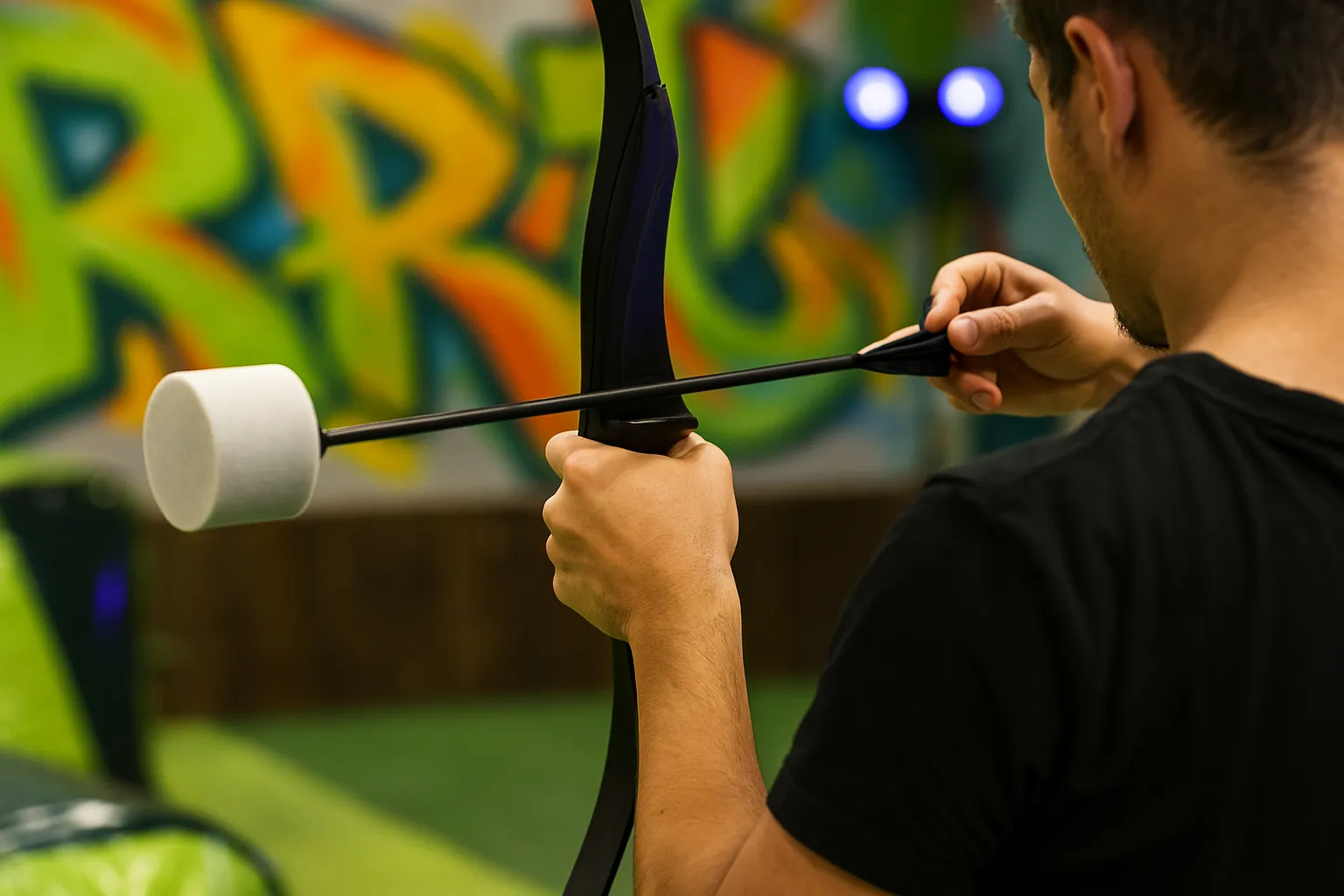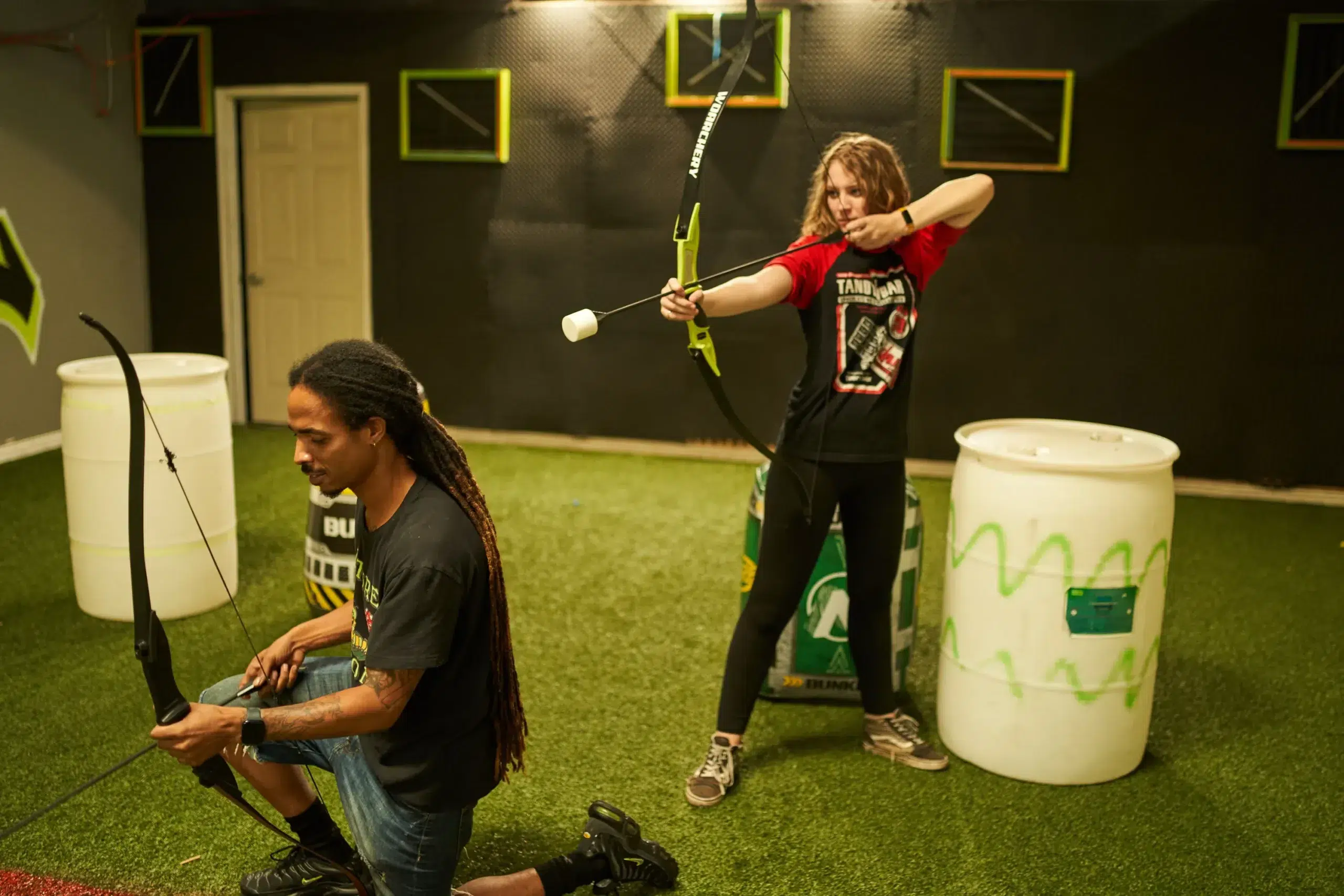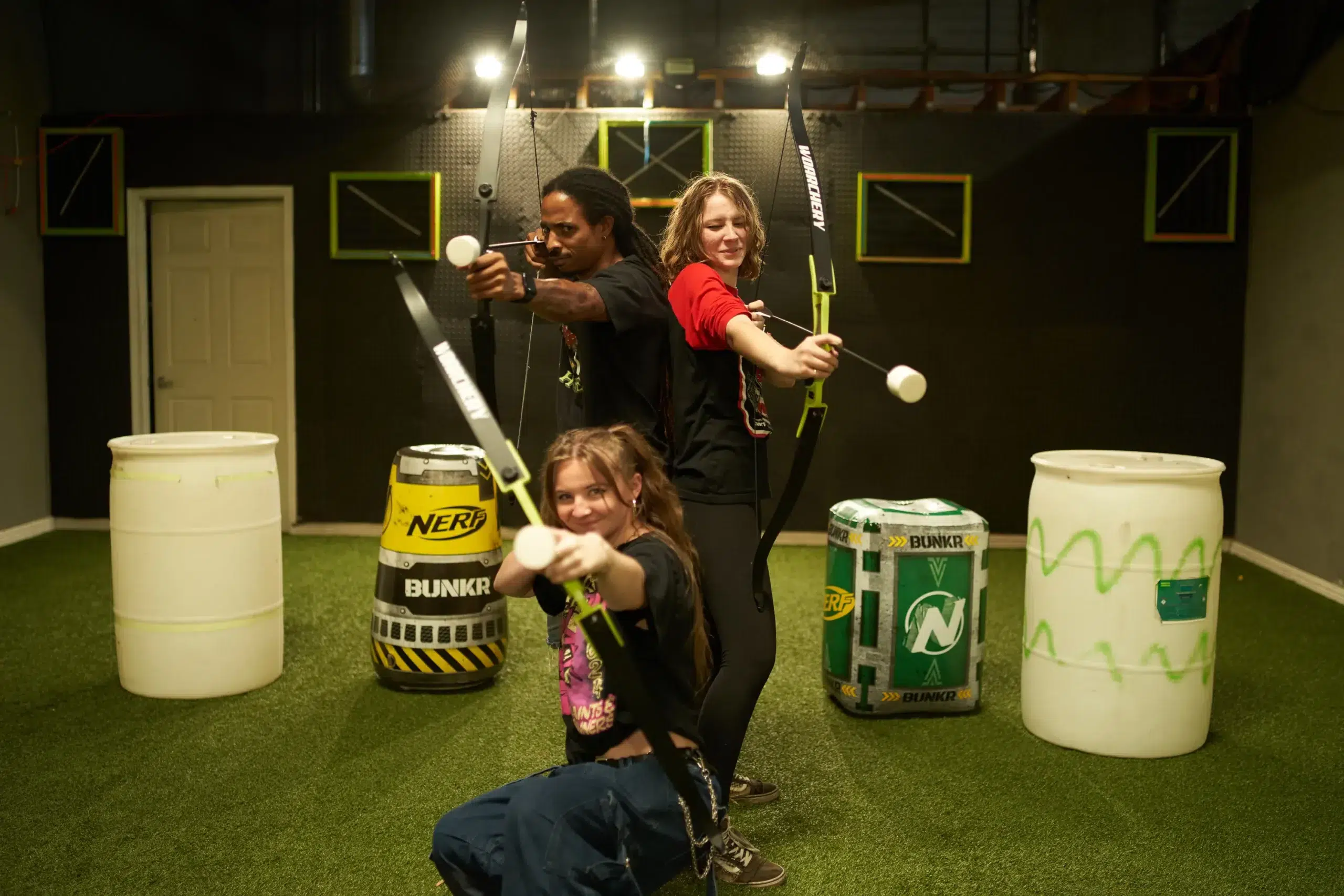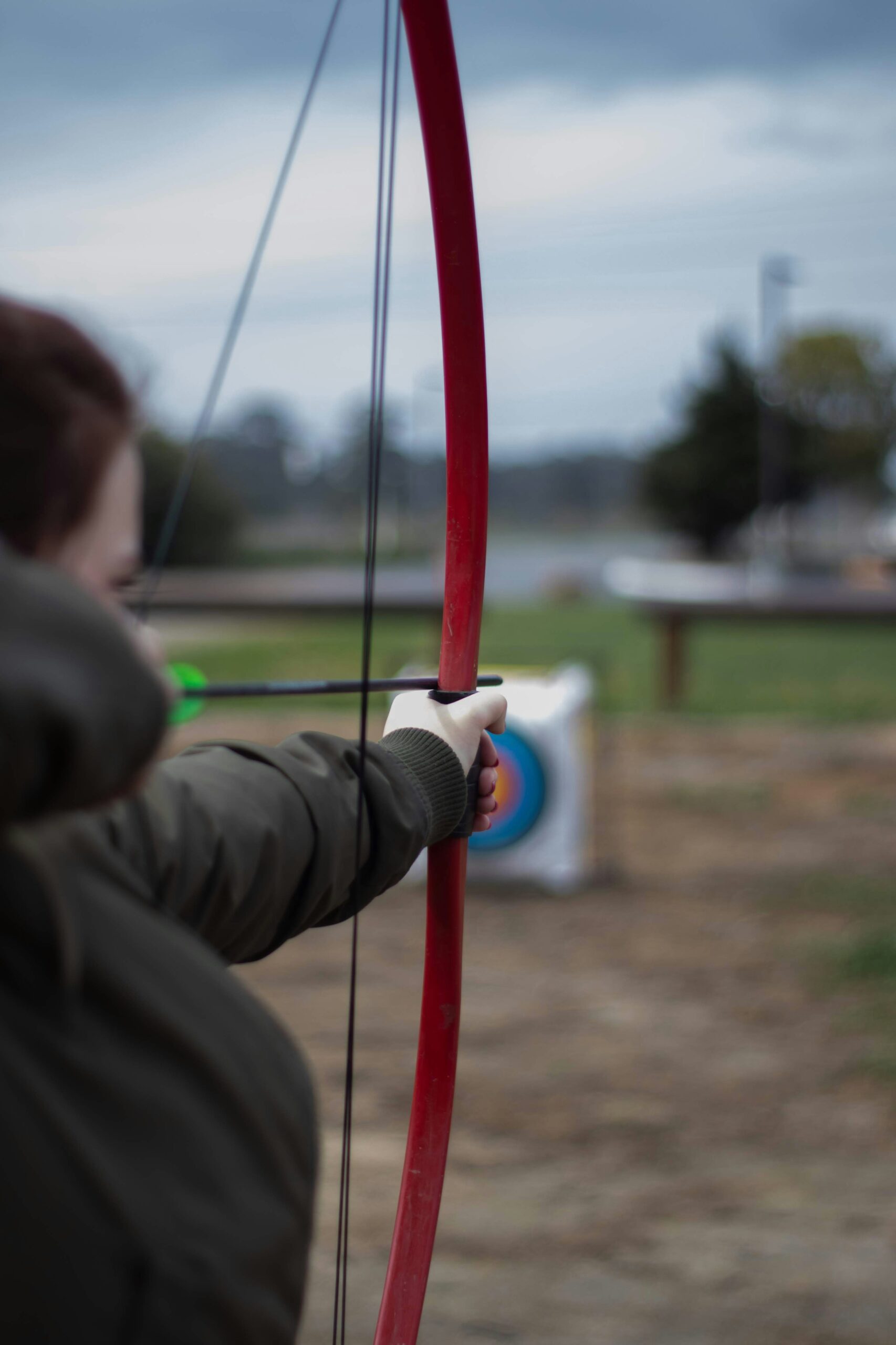Arrow Tag has taken group entertainment to the next level with its exciting blend of strategy, movement, and friendly competition. It’s not just about dodging foam-tipped arrows—it’s about outsmarting opponents, working as a team, and adapting to ever-changing game rules. From kids’ birthday parties to high-energy corporate events, Arrow Tag delivers action-packed fun for all ages. What truly sets it apart are the diverse game formats that keep every match fresh and unpredictable.
Whether you’re a stealthy solo player or a coordinated team strategist, there’s a format designed to fit your vibe. Each style offers a unique challenge, ensuring that no two sessions feel the same. These formats encourage creativity, fast decision-making, and tons of laughs along the way. Let’s dive into the most popular Arrow Tag game types and what makes each one a blast to play.
Key Takeaways
- Arrow Tag formats range from traditional to hybrid game styles.
- Team-based play promotes communication and role-based tactics.
- Elimination formats increase intensity with high-stakes gameplay.
- Time-limited matches create urgency and excitement.
- Mixed formats keep games unpredictable and engaging for all.
Traditional Arrow Tag Formats and Their Unique Features

Traditional Arrow Tag formats are built upon classic game mechanics that emphasize simplicity, safety, and structured play. The core idea is to blend familiar elements from conventional tag games and archery while ensuring that players can quickly learn and safely enjoy the session. The basic premise involves players using foam arrows or similar safe projectiles, targeting designated opponents while avoiding hazards on the playfield. With clearly defined areas and rules, traditional Arrow Tag offers an accessible entry point for new players and provides a platform that supports various skill levels.
Game Structure and Standard Rules for Traditional Formats
The game structure in traditional Arrow Tag is designed to keep things straightforward and easy to follow. Players typically start from designated zones and work within marked boundaries to tag opponents using foam-tipped arrows. Every session requires participants to wear protective vests and headgear, ensuring safety remains a top priority. The rules generally discourage physical contact, promote respectful gameplay, and designate areas like safe zones or penalty boxes. This structure helps maintain order while enhancing the game’s fairness. The simplicity of these guidelines makes this format ideal for school groups, birthday parties, or anyone new to Arrow Tag.
Equipment and Safety Measures Specific to Classic Play
Traditional formats focus on simple, reliable equipment to ensure safe play. Players are provided with foam-tipped arrows, lightweight bows, and basic body gear like vests and face masks. These items are selected to minimize the chance of injury while still offering the thrill of archery-inspired competition. Safety protocols include inspecting equipment before use and explaining rules beforehand, so players know how to shoot and dodge effectively. Field layouts are also tailored to avoid collisions, with clear divisions and padded barriers. These consistent safety practices make the classic format approachable for people of all ages and skill levels.
Common Strategies Used in Traditional Sessions
Strategy in traditional Arrow Tag often revolves around agility, positioning, and timing. Players use obstacles for cover and time their movements to avoid being tagged while looking for opportunities to take a clean shot. Staying light on one’s feet and working with teammates when possible adds a layer of tactical depth. Some players prefer a stealthy approach—sneaking between cover—while others rely on quick bursts to surprise opponents. Communication, even in a non-team setting, helps coordinate actions or warn others of danger. These adaptable tactics keep each session lively and unpredictable.
Team-Based Arrow Tag Game Variations

Team-based Arrow Tag games focus on collaboration and strategic teamwork. Instead of each player fending for themselves, participants work in squads to achieve shared goals, like defending zones, outmaneuvering opponents, or scoring coordinated hits. This structure naturally encourages communication and trust. These formats are often featured in corporate team-building activities, as they require both mental and physical cooperation. With clear objectives and varied challenges, team-based Arrow Tag offers a refreshing way to test group dynamics in a fun and high-energy setting.
Formation Strategies for Group Play
Team formations can significantly affect the outcome of a match. Groups often use wedge or V-shaped setups to push forward together, allowing some players to attack while others guard the rear. Other formations, like tight flanks, help secure the edges of the play area and avoid being surrounded. Teams may shift positions mid-game based on the opposition’s movement, breaking apart and regrouping quickly to keep up pressure. Practicing different layouts before gameplay helps players recognize when to switch roles or create space. This adaptability is a core part of a successful team strategy.
Role Assignments and Teamwork Dynamics
Defining player roles allows teams to operate more efficiently. Common roles include attackers who lead charges, defenders who guard critical areas, and scouts who gather information and distract opponents. Some players may act as support, relaying instructions or providing cover fire. These roles ensure everyone has a clear job and contributes to the team’s success. As the match progresses, players may shift roles on the fly depending on injuries, eliminations, or new strategies. This flexible teamwork dynamic builds trust and gives every player a sense of purpose within the game.
Competitive Scenarios in Team-Based Formats
Team-based Arrow Tag can include specific challenges to increase the fun and competition. Games might feature objectives like guarding a central flag, protecting a “VIP” player, or capturing points by controlling specific zones. These added layers require players to think tactically and adjust their gameplay. Time limits or scoring systems based on successful hits and completed missions also bring urgency and focus. These competitive twists add excitement and variation, keeping teams on their toes and ensuring that each match is both mentally stimulating and physically engaging.
Elimination Style Arrow Tag Game Formats

Elimination formats in Arrow Tag introduce a high-stakes environment where tagged players are removed from the game. These matches intensify quickly, demanding sharper reflexes and smarter decision-making. As fewer players remain, tension builds, and strategies must evolve to suit changing dynamics. This format is a favorite among thrill-seekers and seasoned players because every move counts. It rewards those who can balance aggression with caution and often results in dramatic final showdowns.
Round-by-Round Progression and Survival Rules
Elimination matches move in short, intense rounds where once you’re tagged, you’re out until the next reset. These rounds challenge players to adapt quickly, relying on stealth, speed, and timing to stay in the game. Rules often include short breaks between rounds to refresh and strategize. To keep things inclusive, eliminated players might rotate into support roles or prepare for the next round. This setup promotes thoughtful play, with each decision—attack or retreat—holding serious consequences.
Techniques for Improving Elimination Game Stamina
Lasting through multiple elimination rounds takes stamina. Players train their endurance through quick sprints, agility drills, and strategy-based exercises to improve game survival. Mental focus also plays a big part—knowing when to take a shot and when to dodge can be the difference between staying in and getting tagged. Practicing quick changes in direction, managing breath control, and reading opponents’ body language are all vital skills. These techniques ensure players can maintain peak performance even as rounds become more intense.
Managing Player Rotation in High-Energy Sessions
Elimination games are physically demanding, so managing player energy levels is important. Rotating in fresh players after each round ensures that teams remain effective and no one burns out too early. Teams often switch positions mid-match to allow faster recovery, while leaders keep track of who needs a breather. Communication during these swaps is key to maintaining momentum and coverage. By cycling players smartly, teams stay sharp and maximize their chances of outlasting the competition.
Time-Limited Arrow Tag Game Scenarios

Time-limited Arrow Tag games challenge players to make the most of every second. These matches end when the clock runs out, not when all players are tagged, which creates an urgent, action-packed environment. This format pushes both strategic thinking and physical stamina, as players must act quickly without sacrificing safety or coordination. Whether you’re defending a zone, hunting targets, or just trying to survive, the clock ticking down adds a thrilling layer to the match.
Setting Time Constraints for Action-Packed Matches
Setting a strict time limit keeps players focused and fast-paced. Most sessions last a set number of minutes, with the goal being to earn as many points or survive as long as possible within that time. This format encourages teams to move quickly, prioritize high-value plays, and take more calculated risks. Visual countdowns and loud buzzers keep the pressure on. It’s a great fit for competitive events and energetic team activities where participants thrive on the thrill of a race against time.
Balancing Game Pace With Safety Considerations
Fast-paced action needs to be balanced with smart safety practices. Organizers often build in short breaks between matches and clearly enforce rules about contact and speed. Field marshals or referees monitor players to prevent injuries and ensure everyone stays within boundaries. Adjustments like limiting the number of arrows per player or slowing arrow velocity can help manage intensity. With the right structure, even high-speed matches can be safe, enjoyable, and stress-free for all skill levels.
Adjusting Play Complexity Within Limited Durations
To keep things running smoothly in timed matches, organizers often streamline the rules. For example, some formats simplify scoring systems or limit the play zone to speed up engagement. Others introduce bonus zones or hidden targets that award quick points. These tweaks help avoid confusion and keep players focused on fast action rather than complex instructions. With fewer rules to remember, participants can jump in quickly and enjoy more play in less time, making this format ideal for newcomers and experienced players alike.
Frequently Asked Questions
What age groups can play Arrow Tag?
Arrow Tag is suitable for players of most ages, typically starting from 7 years and up. It’s a safe, family-friendly activity when proper gear is used.
Is Arrow Tag safe for beginners?
Yes! With foam-tipped arrows and protective gear, Arrow Tag is designed to be safe and beginner-friendly. Game organizers also provide clear safety briefings.
Can Arrow Tag be played indoors and outdoors?
Absolutely. Arrow Tag can be played in both indoor arenas and outdoor fields, with adjustments made for space, obstacles, and player count.
Do I need to bring my own equipment?
Most venues provide all the necessary gear, including bows, foam arrows, masks, and vests. You just need to show up ready to play!
What makes the mixed format Arrow Tag different?
Mixed format Arrow Tag combines different styles—like team play, individual rounds, and elimination games—to keep the experience fresh and dynamic throughout the event.
Conclusion
Arrow Tag continues to grow in popularity thanks to its versatility, safety-focused design, and immersive gameplay options. From straightforward traditional matches to high-energy team showdowns, intense elimination rounds, timed challenges, and creative mixed formats, each game style offers a fresh experience that appeals to a wide range of players.
These formats aren’t just fun—they also promote physical activity, communication, and quick thinking in a fast-paced, safe environment. Whether you’re planning a birthday party, team-building event, or weekend adventure with friends, there’s an Arrow Tag format that fits your group’s energy and style. The flexibility of the game means every match is unique, every shot counts, and every player walks away with unforgettable memories.

